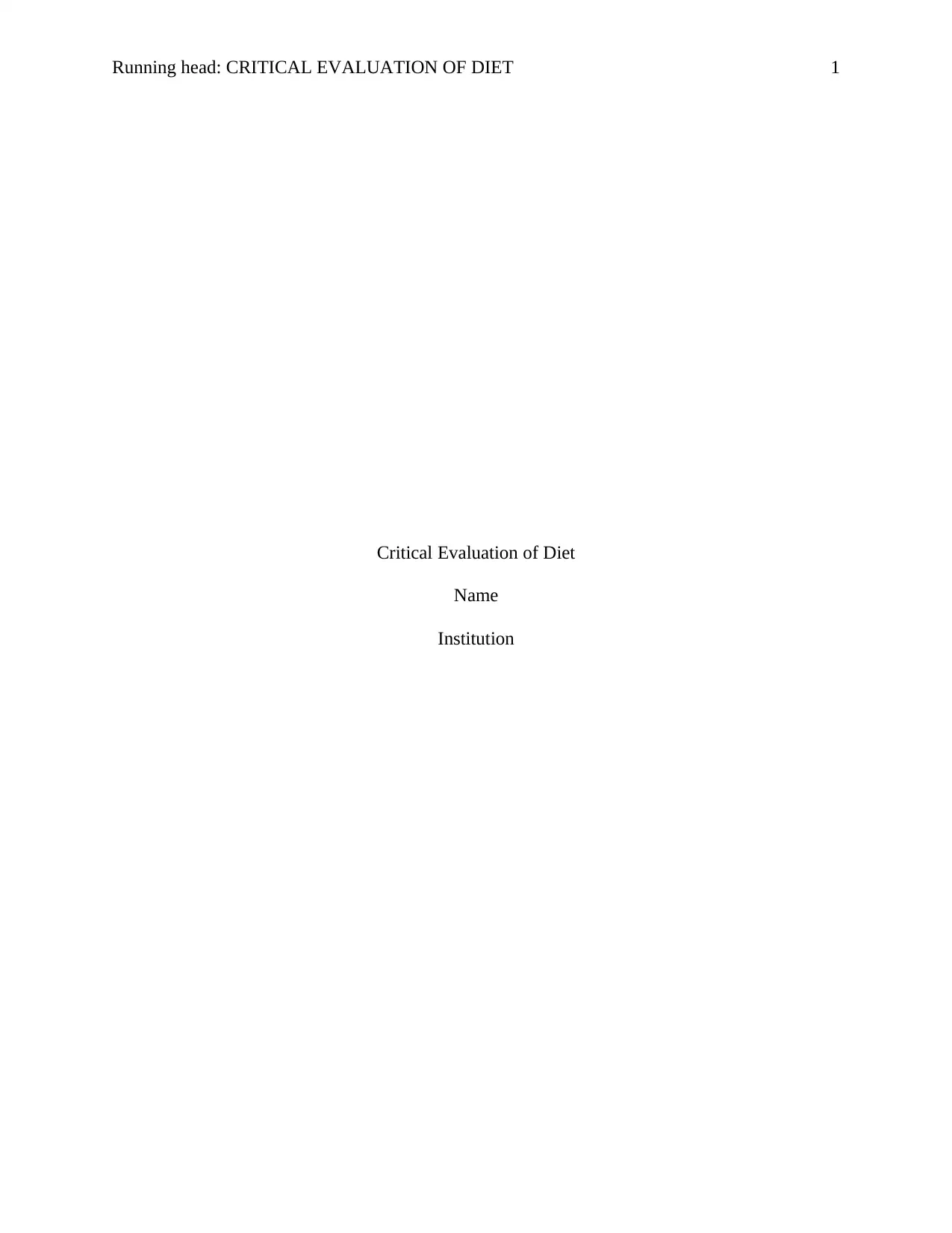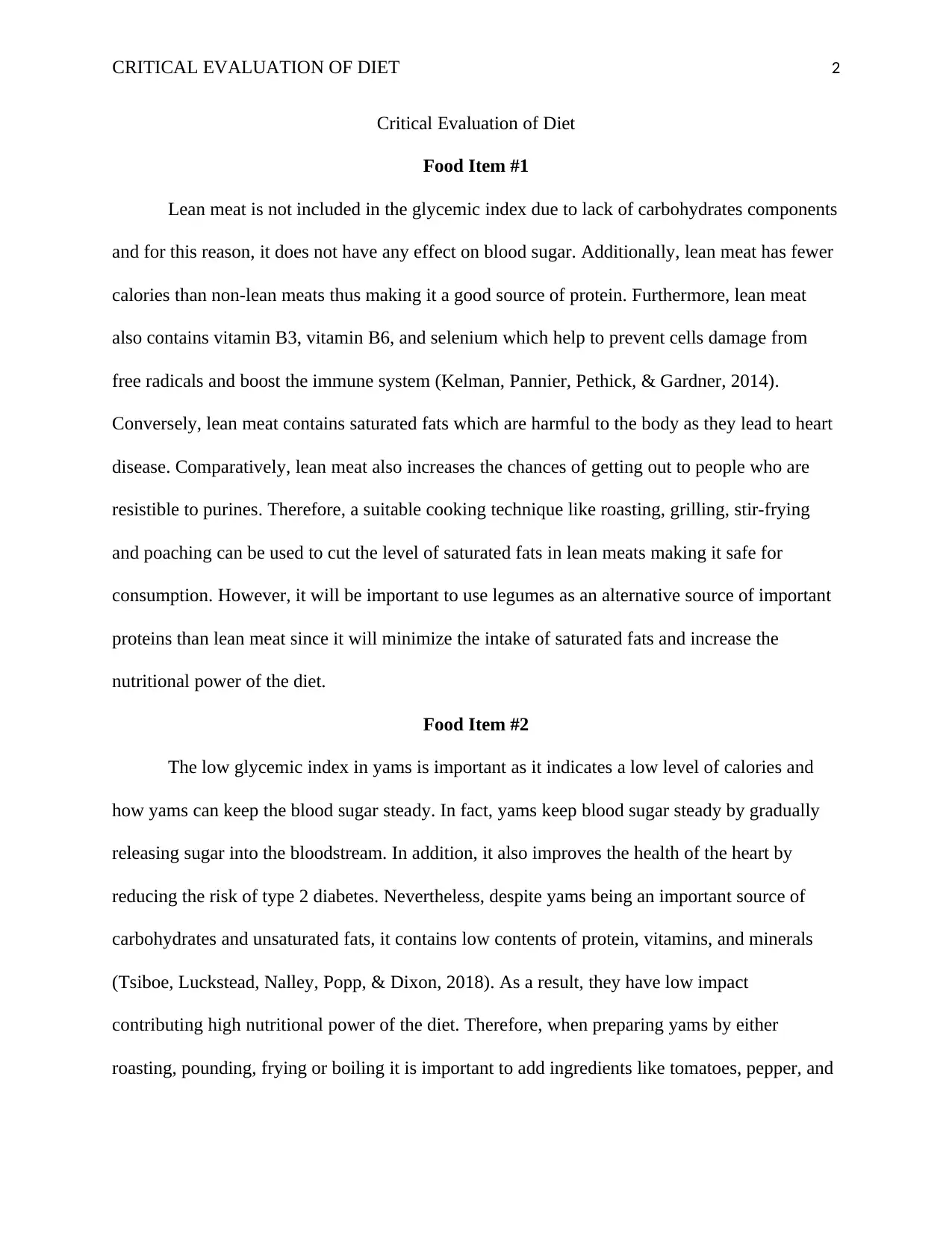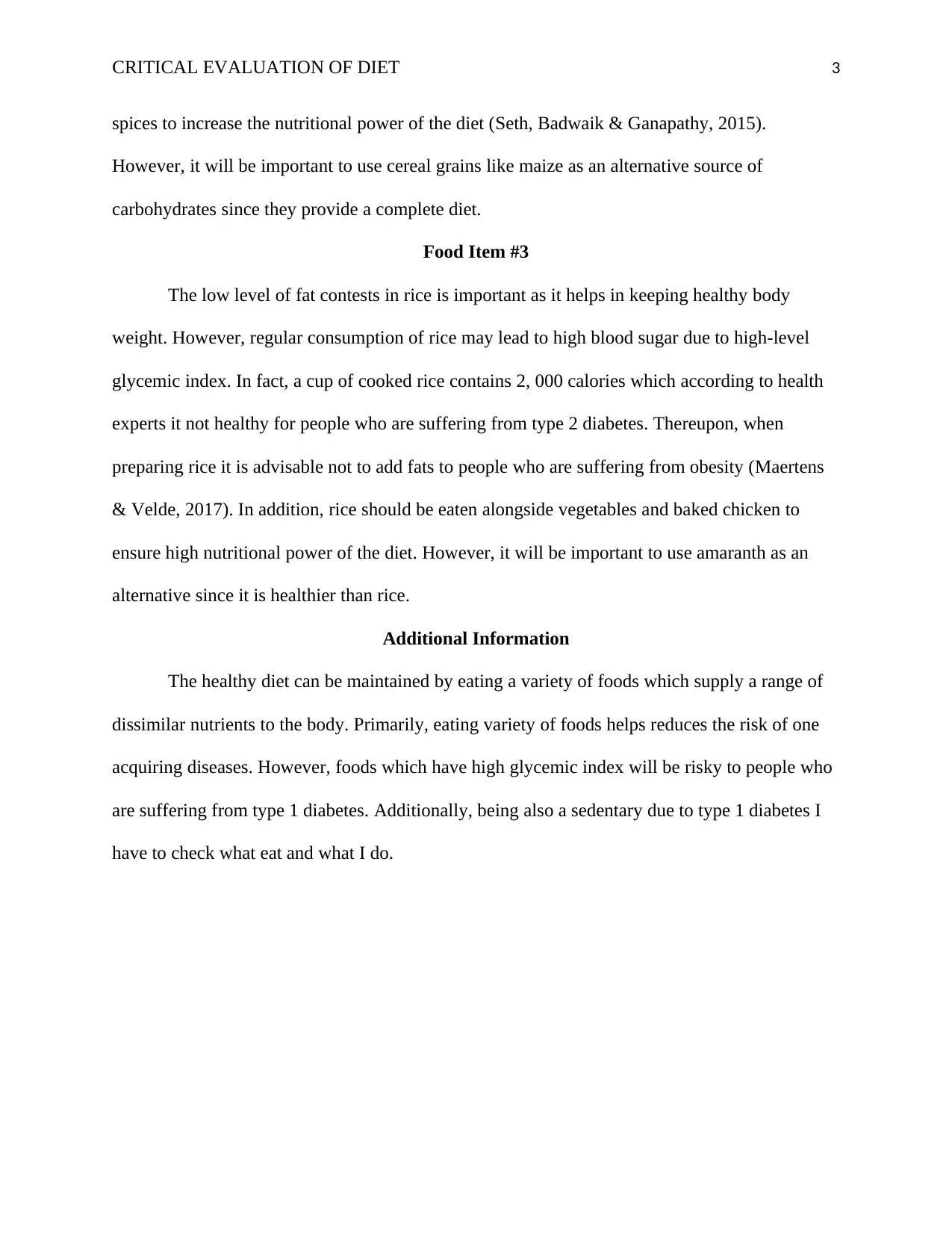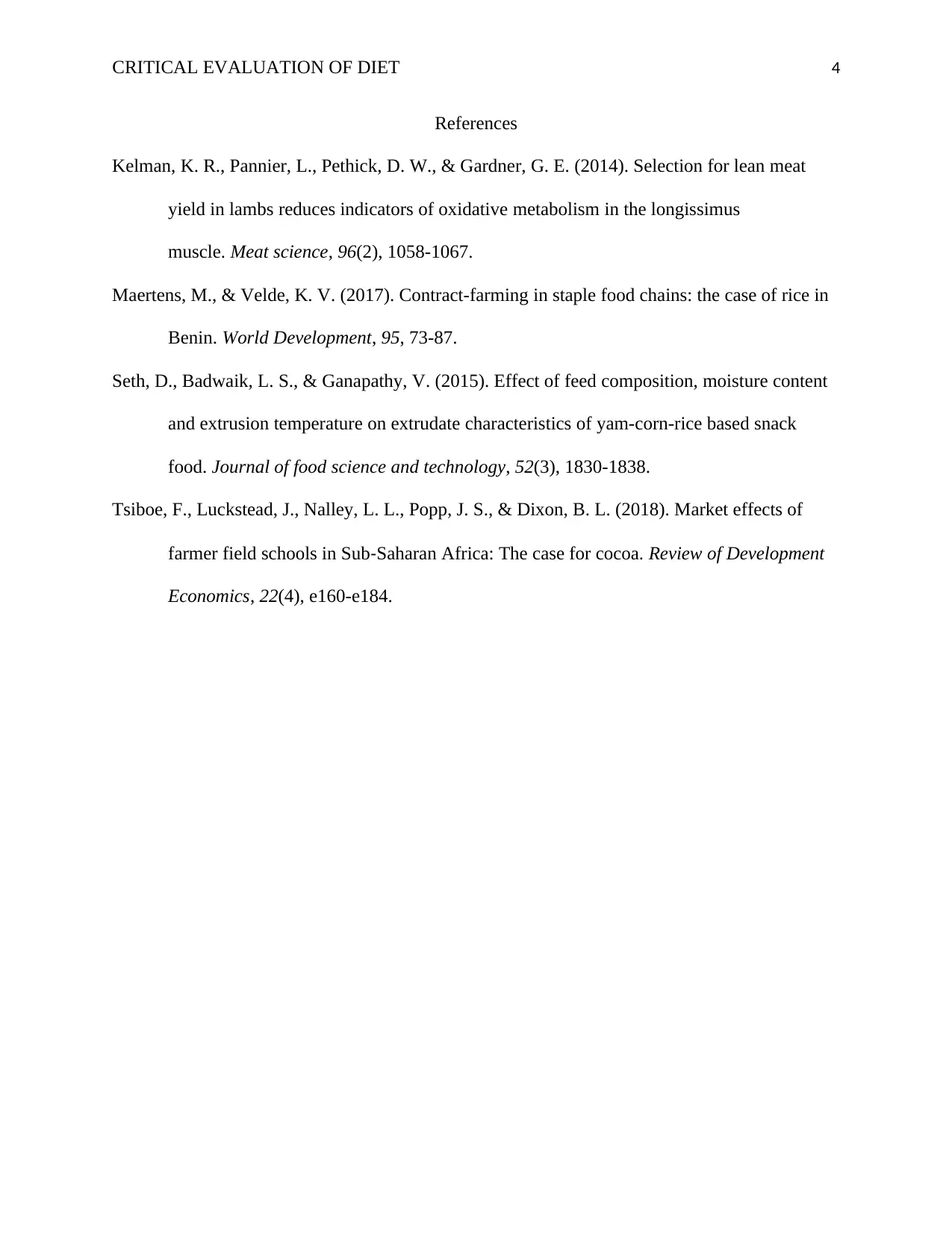Nutrition Report: Critical Evaluation of Diet and Food Item Analysis
VerifiedAdded on 2021/12/22
|4
|828
|309
Report
AI Summary
This report provides a critical evaluation of a diet, focusing on three food items: lean meat, yams, and rice. The analysis examines the nutritional aspects of each item, including the glycemic index, calorie content, and presence of essential nutrients like vitamins and minerals. It discusses the benefits and drawbacks of each food, such as the protein content and potential risks associated with saturated fats in lean meat, the low protein and vitamin content of yams, and the high glycemic index of rice. The report suggests alternative food choices like legumes, maize, and amaranth to enhance the nutritional value of the diet and mitigate potential health risks. Overall, the report emphasizes the importance of a varied diet for maintaining good health and managing conditions like type 1 and type 2 diabetes.
1 out of 4











![[object Object]](/_next/static/media/star-bottom.7253800d.svg)